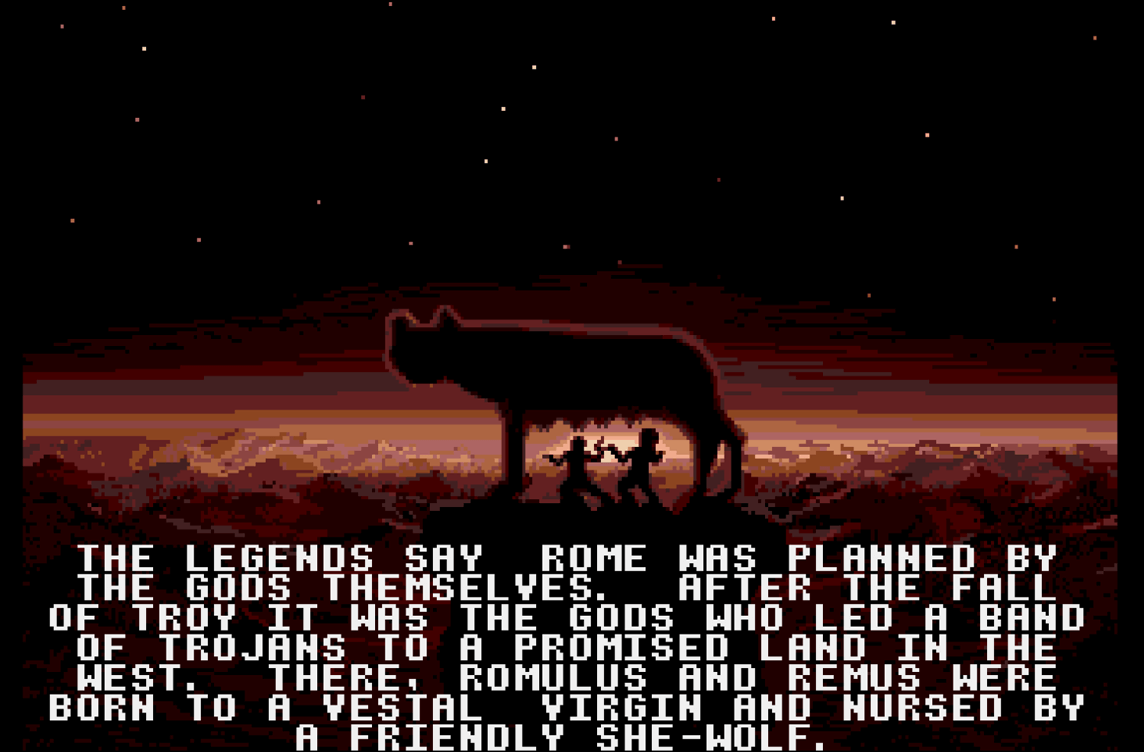Centurion: Defender of Rome transports players back to the heart of the Roman Republic, allowing them to step into the sandals of the legendary Julius Caesar.
Developed by Kellyn Beck, this historical strategy game offers a glimpse into the complexities of ancient warfare, governance, and diplomacy. While it provides an engaging experience, it also has its share of limitations.
A Glimpse into Roman History
The game begins with the rise of Julius Caesar, as he embarks on a mission to conquer and unify the vast territories of Europe. The narrative, while condensed and generalized, captures the essence of Rome’s expansionist ambitions.
From the conquest of Dalmatia for its famed dogs to the acquisition of Helvetii for its distinctive font, Caesar’s journey is portrayed with a mix of historical accuracy and creative flair. While some liberties are taken for storytelling purposes, the core narrative remains intact.
Managing an Empire, Year by Year
Players start as a low-ranking officer tasked with overseeing a single legion in the province of Italia. This province, though formidable in manpower, harbors a restless population that demands attention.
The longer Caesar is away on military campaigns, the more discontent simmers. To quell potential uprisings, players can allocate resources for grand gladiatorial games, mirroring the political strategy of diverting public attention.
Centurion introduces players to a series of mini-games, each offering a unique perspective on the challenges Caesar faced. One such game centers on gladiatorial combat, a feature originally more interactive but reduced to menu selections in the Genesis version.
Choosing between man-to-man combat or facing formidable beasts impacts the costs but not the visual outcome. While these games add depth to the empire management experience, they could benefit from more interactive elements.

Warfare and Strategy
Centurion excels in portraying the intricacies of Roman warfare. The choice of strategy and tactics significantly influences the outcome of battles. Formations play a crucial role, with four options available for selection. However, the absence of enemy troop information before a battle forces players to make tactical decisions blindly, adding an element of unpredictability.
Success in battles hinges on troop morale and the leadership of the appointed general. The distinction between “fierce,” “good,” and “weak” men affects combat performance. Building legions with “fierce” warriors proves crucial, as they exhibit unwavering determination on the battlefield. This strategic element, coupled with the influence radius of generals, adds depth to the gameplay.
Diplomacy and Alliances
Diplomacy in Centurion is streamlined, with interactions often boiling down to declarations of war. While alliances are possible, they require a show of strength and political finesse. The simplicity of diplomatic exchanges may leave players yearning for more nuanced negotiations.
Visuals and Historical Context
Centurion: Defender of Rome showcases the prowess of the Roman Republic in its expansive, albeit pixelated, glory. The graphics, while reflective of the era, are limited by the Genesis platform‘s color palette, resulting in a somewhat muddy appearance. T
he battles, though engaging, lack environmental diversity and are primarily depicted on a single screen.
One area where Centurion falls short is in providing historical context. While the manual offers insights into pivotal battles and leaders, the in-game representation is often reduced to names and tactics. A more immersive approach to history could elevate the gaming experience.

Conclusion
Centurion: Defender of Rome offers an engaging foray into ancient Roman history, allowing players to navigate the challenges faced by Julius Caesar. The game’s strengths lie in its strategic warfare elements and the portrayal of Roman governance. However, it does have room for improvement, particularly in its portrayal of historical context and the depth of diplomatic interactions.
Despite its limitations, Centurion stands as a noteworthy addition to the genre, providing a unique blend of strategy and history.
Play Centurion: Defender of Rome Online Anywhere, Anytime!
Now you can enjoy Centurion: Defender of Rome online, fully playable in a web browser!